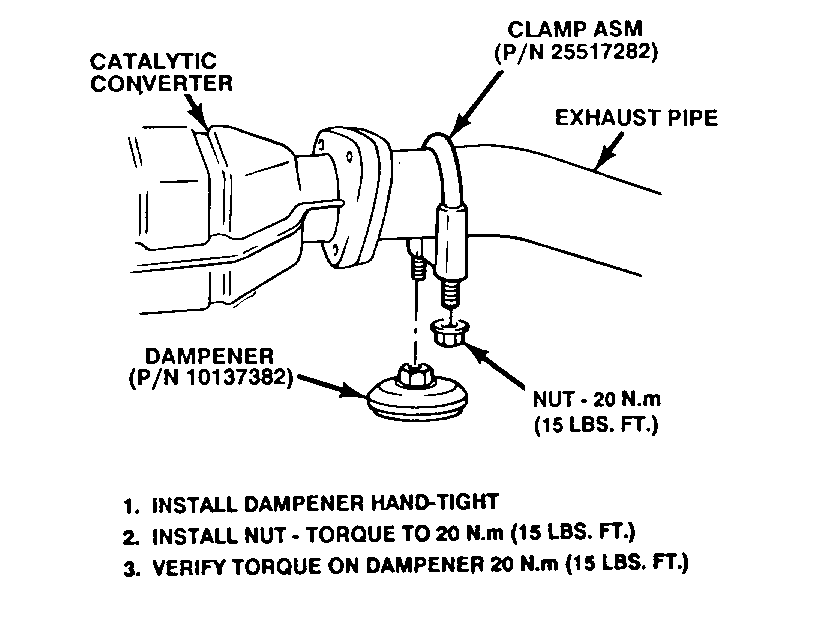INSTALL DAMPENER ON EXHAUST PIPE REAR OF CONVERTER

Model and Year: 1982-90 CAVALIERS WITH 1.8L, 2.0L OR 2.2L ENGINES
THIS BULLETIN CANCELS AND SUPERSEDES DEALER SERVICE BULLETIN NO. 90-181-6F, DATED MARCH 1990. THE ILLUSTRATION HAS BEEN INCLUDED. ALL COPIES OF 90-181-6F SHOULD BE DISCARDED.
Some customers may comment about an exhaust moan or boom that occurs primarily at 1900 rpm and at 2400 rpm.
This condition can be corrected by installing a mass dampener, (P/N 10137382) using a 2-inch exhaust clamp (P/N 25517282) per the following instructions and illustration.
1. Remove the nuts and saddle from the clamp assembly. Discard one of the nuts.
2. On 1990 model vehicles, locate clamp assembly on exhaust pipe 62 mm rearward of the exhaust pipe to catalytic converter flange. On 1982-89 vehicles, the clamp assembly may be located directly behind the catalytic converter flange, as long as there is sufficient clearance to heat shields. Do not install the dampener/clamp assembly rearward of the downward bend in the exhaust pipe; there will not be enough ground clearance at this location.
3. Position the saddle on the clamp and install the dampener hand-tight onto one side of the clamp (whichever side has the most clearance from the underbody heat shields).
4. Install one nut on the other side of the clamp and torque it to 20 N.m (14.8 lbs. ft.). Check the torque of the dampener to make sure that it is at least 20 N.m (14.8 lbs. ft.). Do not over-torque the dampener or the clamp nut, or the exhaust pipe may be crushed.
5. Do NOT install a nut on the dampener side of the clamp assembly.
Parts are currently available from GMSPO.
Labor Operation Number: T4655
Labor Time: 0.2 hrs.
Trouble Code: 92

General Motors bulletins are intended for use by professional technicians, not a "do-it-yourselfer". They are written to inform those technicians of conditions that may occur on some vehicles, or to provide information that could assist in the proper service of a vehicle. Properly trained technicians have the equipment, tools, safety instructions and know-how to do a job properly and safely. If a condition is described, do not assume that the bulletin applies to your vehicle, or that your vehicle will have that condition. See a General Motors dealer servicing your brand of General Motors vehicle for information on whether your vehicle may benefit from the information.
